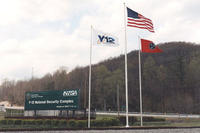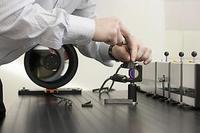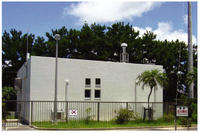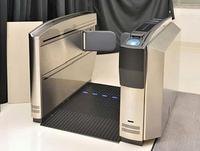-
Experts: German nuclear exit offers economic, environmental benefits
Following the accident at the Fukushima Daiichi Nuclear Power Station in 2011, the German government took the nation’s eight oldest reactors offline immediately and passed legislation which will close the last nuclear power plant by 2022; this nuclear phase-out had overwhelming political support in Germany; elsewhere, many saw it as “panic politics”; a new collection of studies shows that the nuclear shutdown and an accompanying move toward renewable energy are already yielding measurable economic and environmental benefits
-
-
Approaches to international consequence management for CBRNE incidents
The National Research Council (NRC) of the National Academy of Sciences, through a grant sponsored by NIST’s Office of Law Enforcement Standards (OLES), is organizing an effort to understand the metrics and measures that are needed to develop standards of response that will support the basic capabilities of a country or region to respond to a chemical, biological, radiological, nuclear, or explosive (CBRNE) incident
-
-
Technology used in BioWatch could not detect pathogens, issued false alarms
The BioWatch program was created to detect the release of pathogens in the air as part of a terrorist attack, but scientists say that the program is unable to detect lethal germs because the system uses defective components; these components often set off false alarms; for example, BioWatch sensors issued fifty alarms between 2003 and 2008, but scientists and security authorities never had enough confidence in the BioWatch system to evacuate an area or take other emergency steps
-
-
TSA replaces backscatter scanners with millimeter wave scanners at some airports

TSA is replacing some backscatter scanners at large U.S. airports with millimeter wave scanners; backscatter scanners were criticized for violating travelers’ privacy, and risking travelers’ health by emitting high levels of radiation
-
-
Twenty-year anniversary of U.S. last full-scale nuclear test
The first U.S. nuclear test, code named Trinity, took place in southern New Mexico forty-seven years earlier, on 16 July 1945; in all, the United States conducted 1,030 nuclear tests – the last one, code-named Divider, took place twenty years ago, on 23 September 1992
-
-
Los Alamos lab accelerates shipment of nuclear waste to permanent storage site

Los Alamos National Laboratory broke its own records in the first year of accelerated shipping effort of nuclear waste from the Lab to permanent disposal facilities located twenty-six miles outside of Carlsbad, New Mexico
-
-
Different technologies aim to replace dogs as explosives detectors
Bomb-sniffing dogs are the best and most popular way for airport security quickly to detect anyone planning to bring explosives to an airport; scientists are trying to change that; Dr. Denis Spitzer and his colleagues, for example, are working on a sensor that will detect vapors of TNT and other explosives in very faint amounts; the device they are trying to create would replace dogs as the top bomb detecting method in the field
-
-
DARPA seeking tools for identifying hidden explosives at standoff
The threat to U.S. soldiers from improvised explosive devices (IEDs) is as varied as the makers of IEDs are resourceful in how they design and conceal the explosives; interdisciplinary teams needed to develop proof-of-concept demonstrations of technology for identifying presence of embedded explosives in opaque, high-water-content substances
-
-
Mice genetically modified to detect landmines

In another advancement in explosives detection, scientists have genetically modified mice to enable them to sniff out landmines; the GM mouse, known as MouSensor, may one day become a significant tool to help deal with the dangerous legacies of past wars
-
-
CNN commentator complains of inappropriate TSA pat down
A CNN commentator says she was molested by TSA agents when a routine security pat-down ended with federal agents repeatedly touching her private parts and refusing her a public screening
-
-
Y-12 Nuclear Complex’s uranium processing facility to be redesigned

Weeks after the inadequacy of security measures at the Y-12 Nuclear Complex came to light — an 82-year old nun and her two senior citizen colleagues eluded the facility’s fences and security to spend a few hours on the site’s grounds and spray-paint anti-nuclear slogans on its walls – criticism is directed at the design shortcomings of a new uranium processing facility; among other things, the roof of the new facility will have to be raised by thirteen feet because the designers did not take into account the size of the equipment the new facility will house
-
-
Green laser pointer identifies traces of dangerous chemicals in real time

By using an ordinary green laser pointer, the kind commonly found in offices and college lecture halls, an Israeli research team has developed a new and portable Raman spectrometer which can detect minute traces of hazardous chemicals in real time; the new sensor’s compact design makes it a candidate for rapid field deployment to disaster zones and areas with security concerns
-
-
Two suspected 2010 North Korea nuclear “tests” probably never happened: study

It is generally accepted that North Korea has carried out at least two nuclear test explosions, in 2006 and 2009, with the second test — thought to be in the range of about two to four kilotons — was five times more powerful than the first; this spring, a Swedish scientist sparked international concern when he said that radioactive particles detected in 2010 showed North Korea had set off at least two small nuclear blasts that year; now, a new paper says the tests likely never took place — or that if they did, they were too tiny to have any military significance
-
-
New methods might drastically reduce the costs of investigating polluted sites
In Europe there are over 20,000 complex and large contaminated areas. These so-called megasites threaten scarce land and water resources, create environmental and health risks, and result in economic and social costs; new methods may allow polluted sites to be investigated and monitored long term at significantly reduced costs
-
-
Boarding gate with built-in explosives detection speeds up airport security checks

Japanese researchers have developed a boarding gate with built-in explosives detection equipment; the gate collects minute particles which have affixed themselves to IC cards or portable devices used as boarding passes, and can detect within one or two seconds the presence of explosive compounds using internalized equipment; the developers say the gate allows the inspection of 1,200 passengers per hour
-
More headlines
The long view
Keeping the Lights on with Nuclear Waste: Radiochemistry Transforms Nuclear Waste into Strategic Materials
How UNLV radiochemistry is pioneering the future of energy in the Southwest by salvaging strategic materials from nuclear dumps –and making it safe.
Model Predicts Long-Term Effects of Nuclear Waste on Underground Disposal Systems
The simulations matched results from an underground lab experiment in Switzerland, suggesting modeling could be used to validate the safety of nuclear disposal sites.
